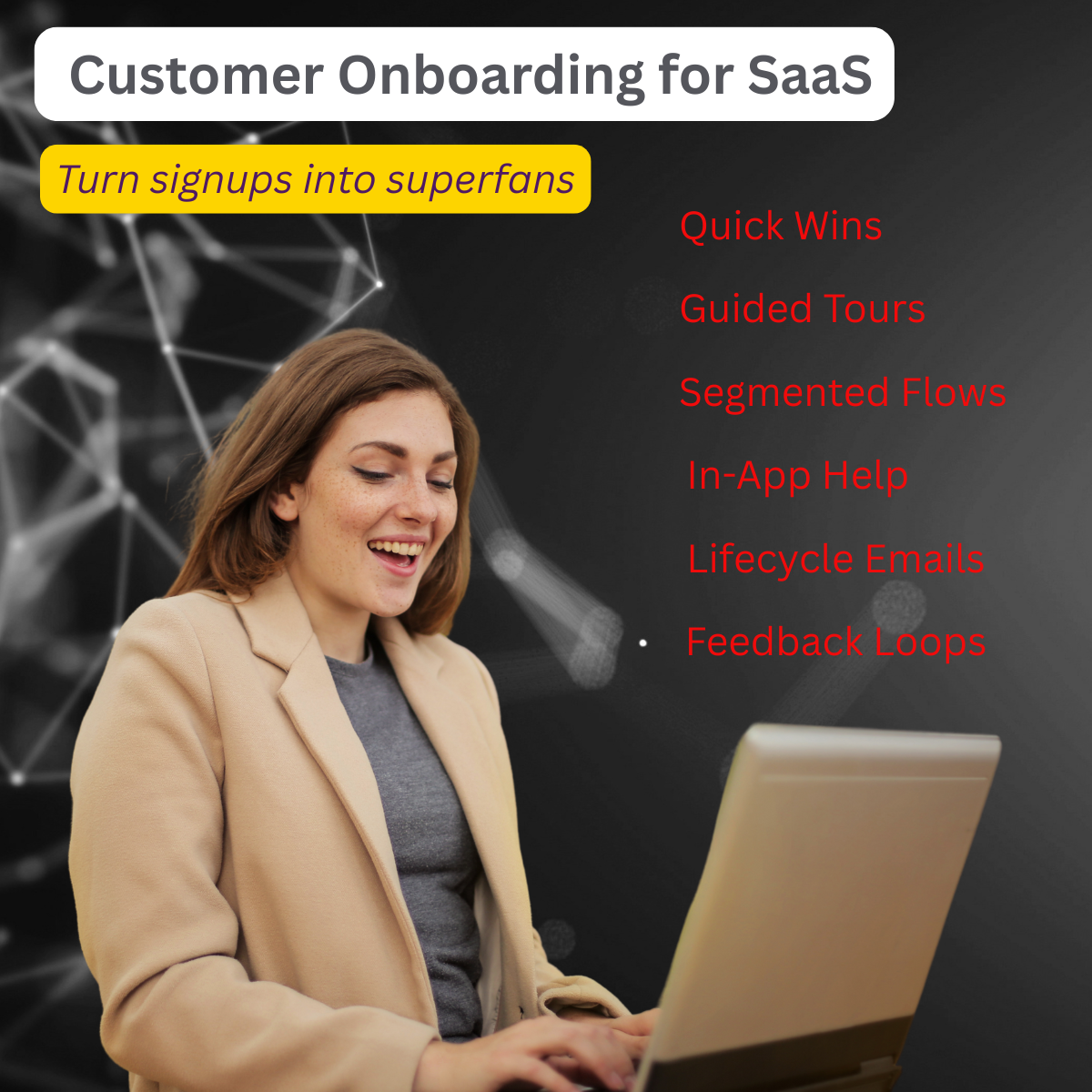Posted At: Aug 12, 2025 - 388 Views

🚀 Customer Onboarding: Best Practices for Retaining Users on a SaaS Platform
First impressions matter—especially in SaaS. The moment a user signs up for your platform, the clock starts ticking. If they don’t quickly realize value, they’ll churn. That’s why customer onboarding is not just a feature—it's a retention strategy.
In this blog, we’ll break down what makes a great onboarding experience and share actionable best practices to keep users engaged and loyal.
💡 Why Onboarding Matters So Much in SaaS
Unlike physical products, SaaS platforms rely on users sticking around long enough to experience real value. A poor onboarding experience can result in:
- 🚪 High early-stage churn
- 💰 Wasted customer acquisition cost (CAC)
- 👎 Low product adoption
- 😡 Negative word-of-mouth
On the flip side, a well-crafted onboarding flow leads to:
✅ Faster time-to-value (TTV)
✅ Higher customer satisfaction
✅ Better product engagement
✅ Long-term retention and expansion
🔑 Key Elements of Effective SaaS Onboarding
Let’s dive into the core components that can make or break your onboarding process.
1. Simplified Sign-Up and Quick Wins
- No friction: Allow users to register quickly (SSO, Google login, magic links).
- Progressive profiling: Don’t ask for too much upfront. Gather more data as the user gets engaged.
- Quick win moments: Let users accomplish something meaningful in the first few minutes.
Example: Canva lets users design a project almost instantly after signup—no lengthy setup required.
2. Interactive Product Tours
- Use guided walkthroughs to show how the product works.
- Avoid overwhelming users—focus on 2–3 core features first.
- Offer tooltips and checklists that guide them as they explore.
Tip: Tools like Appcues, Userpilot, or Pendo make it easy to build no-code onboarding flows.
3. Personalized Onboarding Paths
Not every user has the same goals. Segment users by:
- Role (e.g., marketer vs. developer)
- Use case (e.g., team collaboration vs. solo productivity)
- Experience level (newbie vs. power user)
Deliver dynamic onboarding that adapts based on these segments.
4. Integrated Help and Support
- In-app chat (like Intercom or Zendesk) should be easily accessible.
- Add contextual support—tooltips, FAQs, video explainers.
- Create a self-serve knowledge base with quick-start guides, templates, and case studies.
5. Email Nudges and Lifecycle Messaging
Onboarding doesn’t end when the user closes your app.
- Send behavior-based emails to re-engage users.
- Use milestone messages (“Congrats on creating your first project!”)
- Introduce new features gradually to prevent overload.
6. User Feedback Loops
Ask for feedback early and often:
- What confused them?
- Did they hit any roadblocks?
- What made them stick around?
This helps refine your onboarding process and make it user-centric.
📊 Metrics That Matter
To track onboarding success, monitor:
- Activation Rate: % of users who complete a key action (like creating a project)
- Time to Value (TTV): How fast a user reaches their first success moment
- User Retention: Do users return after day 1, day 7, and day 30?
- Support Tickets: High volume may signal confusion in onboarding
🔁 Continuous Improvement: Onboarding Is Never “Done”
Onboarding isn’t a one-time project—it’s an evolving experience. Your product will change, and so will user expectations. Regularly:
- Run A/B tests on tours and tooltips
- Update onboarding content with product updates
- Review feedback loops and support logs
Keep refining until onboarding becomes a seamless part of the product experience.
🧠 Real-World Examples
- Notion: Uses simple templates + video intros to help users build their first doc in minutes.
- Slack: Encourages users to invite teammates right away, creating instant value.
- Duolingo: Gamifies onboarding with streaks, badges, and personalized learning paths.
✅ Final Thoughts
Customer onboarding isn’t just about getting users in the door—it’s about helping them unlock your product’s value, fast. A smooth, thoughtful onboarding flow can mean the difference between a one-time user and a lifelong customer.
Great onboarding = Better retention = SaaS growth.
